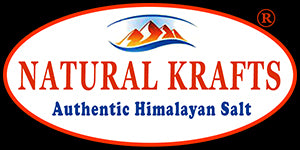Description
How to cure foods using your Himalayan Pink Salt Board: Himalayan salt slabs and bricks can be used to cure thinly sliced meats, fish and seafood. Simply chill your natural salt slab for several hours, then place thin strips of ahi tuna or beef carpaccio directly onto the salt slab and observe as the curing process slowly takes place. The irregular shades of pink and varying textures of this 100% pure wonder of nature make for intriguing conversation and an attractive, natural serving platter for all your favourite foods.
How to sear meat, fish and vegetables with the Himalayan Salt Board: Imagine cooking your food on a 250 million year old slab of pure, crystallized mineral salt. What better way to bring the clean taste and nutritional benefits of pure mineral salt to your table? Himalayan Pink salt slabs can be heated to as high as 450 degrees Fahrenheit and used to lightly sear all sorts of delicious foods. When the cooking is through, your mineral salt slab will slowly return to room temperature for future use as a cold serving plate. Your Himalayan salt slab can be slow-heated, either in the oven or over a gas flame or electric burner, for searing or lightly grilling meat, fish or vegetables. Note that when subjected to high temperatures, the salt slab will turn white in some spots. This is normal. As it cools, your Himalayan salt slab will regain more of its original colouring. Because of the potential for this slight alteration in appearance from heat, you may wish to preserve one slab for display and/or serving, and one slab for cooking if this is a concern. When cooking with your salt slab, ensure that it is completely dry prior to applying any heat, as lingering moisture inside the slab may expand and cause damage to the slab.
Typically the dry time should be at least 24 hours since the slab’s last contact with any moisture. To heat in the oven: Place your dry salt slab into a cold oven and turn the heat to 250 degrees Fahrenheit. When the oven has reached 250 degrees, remove the salt slab and let cool for about 30 minutes. Then return it to the oven and set the temperature for 400 to 450 degrees Fahrenheit. The heat will distribute slowly and evenly throughout. To heat using a gas burner: Place your dry Himalayan salt slab over a low gas flame for 15 minutes. If you desire a higher temperature, heat for an additional 15 minutes on a medium-high gas flame. To heat on an electric stove: Use a metal spacer or wok ring to prevent the salt slab from making direct contact with the heating element. Follow instructions for gas heating. Once you’ve thoroughly heated your Himalayan salt slab, you’re ready to sear your meat, fish and/or vegetables. Place the thoroughly heated salt plate on a heatproof surface. Lightly toss your meat, fish or
vegetables in oil, spices and herbs. You may also wish to lightly drizzle the salt cooking surface with olive oil, adjusting to your desired level of saltiness (less oil will cause more salting of your food and vice versa). Place directly onto the heated salt slab, then cook to desired doneness, stirring and moving around the salt plate as you would any other grilling surface. Your salt block will retain the heated temperature for 20 to 30 minutes. Avoid making direct contact with the salt block for some time after
cooking the meal, as it will take several hours to cool completely. Cleaning your Himalayan Pink Salt Block: To clean your Himalayan salt block, wipe with a clean, damp cloth or paper towel and remove any remaining food bits. Avoid running your natural salt block under water or submerging in water, as any remaining moisture in the salt slab can cause breakage upon heating. Be sure to let your salt slab dry for at least 24 hours after exposure to any moisture. There is no need to use soap or detergent on your Himalayan salt slab, as it is naturally anti-fungal and anti-microbial. You may wish to freshen your salt block with a bit of lemon juice from time to time. Note that the appearance of your Himalayan salt slab will change over time. The more varieties of foods you cook and serve on your salt plate, the more likely the surface will acquire various, interesting new colours and shades. This merely adds to the irregular beauty of the Himalayan salt slab. Your salt block may also develop small fissures and cracks over time; this is typical with regular use. And when it finally is time to replace your Himalayan salt block, you can break up what remains and shave it down to crystals to sprinkle over your food or into your bath. What types of foods can you cook and serve on a Himalayan Pink Salt Board? For serving chilled: Sushi Salads Cold appetizers Fruits and vegetables Cheese Cold dips Cured meats Shellfish Hard-boiled eggs Ice cream Chilled desserts For curing: Thinly sliced tuna, salmon or other fish Shrimp, prawns, scallops or other shellfish Carpaccio For searing: Thinly sliced beef or veal Chicken, duck or other poultry Scallops, shrimp, prawns or other shellfish Fish filets Vegetables (broccoli, zucchini, asparagus, carrots) Eggs Apples, pears, bananas and other fruit.
Specifications
| Dimensions | 12 x 8 x 2 Inches |
| Weight | 5 KG approx. |
| Colour | Rose Pink |
| Shape | Natural Rock Shape |
| Contents | 1 Pc |














